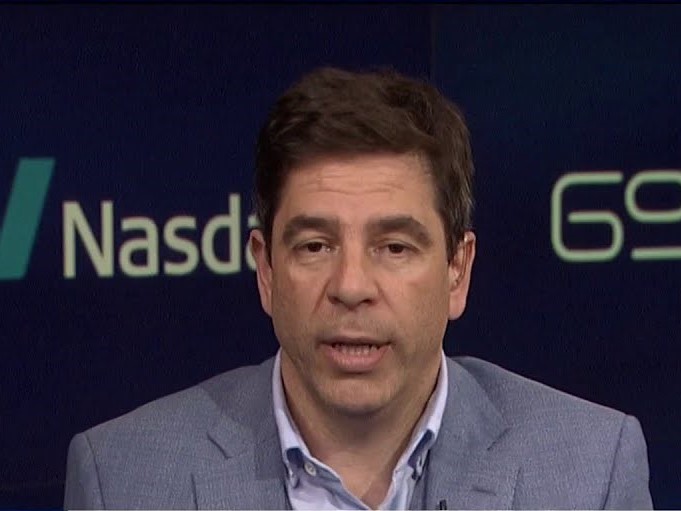- Background industry numbers indicate that consumer resilience should continue to shrug off fears of a broader economic slowdown in H2.
- With rate cuts on the way, the outlook might be looking increasingly favorable for smaller consumer-centric companies.
- Investing.com had a chat with the CEO at Gauzy to discuss the broader macro outlook as well as the state of the consumer going forward.
Despite the expected slowdown in economic activity in the quarters ahead, background industry numbers indicate that „consumer demand should remain resilient.”
The evaluation is from Eyal Peso, CEO and Co-Founder at Gauzy (NASDAQ:GAUZ), with whom Investing.com sat down for an exclusive chat earlier this week.
Among the various topics discussed during the interview, the 43-year-old CEO shared his visions on the outlook of the automotive and housing sectors going forward, particularly against a backdrop of falling interest rates and growing geopolitical tensions.
Given the strong demand for components across the board, Peso believes that consumer-focused small and mid-cap companies — including his own, Gauzy — are well-positioned to navigate the volatile second half of the year in very resilient form.
Investing.com: Automotive demand has been burgeoning in Q2. Is that reflected in the growing demand for components?
Eyal Peyso: From conversations we are having with our customers, I would say demand is definitely strong for automotive components. In our case, this is something we saw tick up at the end of the second quarter of 2023 and has only continued to ramp up since.
Just like consumers want the latest and greatest mobile device or technology in their homes, they are commanding the same in the cars they drive and are willing to pay a little more for it because of the convenience factor. That applies to the commercial transportation sector as well, such as buses and trucks, where ADAS/CMS is utilized. Fleets and city operators want to ensure vehicles have the most advanced safety systems that reduce accidents. So, like other automotive suppliers, the demand for components has remained robust.
IC: Going forward into H2, should we expect auto demand to remain as hot? Or are component sales indicating otherwise?
EP: Automotive is a resilient sector. Automakers are great at adapting to consumer preferences and as such, we may see them place more of an emphasis going forward on producing greater quantities of models that are selling well at the expense of other models that aren’t.
So, that will naturally have an impact one way or the other, meaning a greater demand for components required to produce top-selling vehicles and less of a demand for those non-essential components. Based on our conversations with OEMs and received orders, we are seeing high take rates and preferences for smart glass and ADAS options in private and commercial vehicles.
IC: Given the potential economic slowdown’s impact on the commercial real estate sector, how might demand for the sector fare in light of the favorable rates outlook?
EP: I think I addressed this somewhat already, but any decrease in interest rates is good for the entire real estate sector. Developers rely in large part on financing to move projects forward, and currently, many projects have been put on hold because the economics don’t make sense in this current environment.
When rates decrease, capital investment tends to increase, and if that were to happen, I would expect to see new developments break ground or renovation activity pick up.
IC: Given the rebound in oil prices and rising geopolitical risks, how do you view the outlook for the transportation sector going forward?
EP: There always seems to be a panic when oil and gas prices increase and a rush to judgment in what consumers will do to adjust. After that initial shock subsides, what we continue to see is that consumers really don’t want to be confined to their homes.
There are other sacrifices they may make, but scaling back going places – be it locally, nationally, or internationally – doesn’t seem to be among them. In some cases, higher commodity prices might result in customers leveraging public transportation more than they traditionally have.
IC: On a broader level, how are corporations preparing for supply chain volatility amid growing tensions in the Middle East?
EP: It’s something any company with a global supply chain needs to continually monitor and assess, but we are really confident in how we structured our company. In fact, what’s remarkable about us is we are based in Tel Aviv, and even with the ongoing conflicts between Russia and Ukraine and Israel and Palestine, we were still able to experience some of our strongest growth and take the company public.
So, if turmoil in one part of the world impacts our production capabilities, we have the capacity to boost productivity elsewhere. I can’t speak on behalf of anyone else, but I would think there are quite a few others who would be in a position to do something similar. This is a strategy any company could employ to mitigate potential downside risk.
IC: We expect capital inflows toward small and mid-cap sized companies to increase in H2 as the rates backdrop improves not just in the US, but also globally. How will that affect companies in a faster growth phase such as Gauzy?
EP: Consumers have remained resilient. They want to travel, buy or upgrade real estate, and have the newest cars – all of which help boost demand and consumption for our products. That said, there are definitely some industries I believe will benefit from rate improvement.
Despite the high interest rate environment, demand for air travel remains strong. People desire an experience and want to visit new places, or are required to travel more for work. The data suggests this trend will continue in the second half of this year and beyond, especially if interest rates drop as that can lead to more money in consumers’ pockets for discretionary spending.
As it relates to EV operators, I think there is a misperception out there that growth has stalled. The acceleration in adoption of EVs may have slowed somewhat, but we haven’t seen any slowdown in demand for our products from the OEMS we supply. If the market environment does improve, like some economists predict, that will only help OEMs and even the Tier 1 suppliers that work with them. We really haven’t seen the large OEMs we work with delay their plans as it relates to EVs, so any improvement in rates will only be an added benefit for growing companies like ourselves.
Real estate is another industry poised to benefit from greater certainty surrounding interest rates. As rates drop, it allows real estate operators to invest more heavily in their portfolios. So, I do think an improved rate environment will only help this sector, especially those smaller and mid-sized companies that depend on financing to expedite their growth.
Regardless, lower interest rates make leveraging the debt markets more attractive for all companies – larger, mid-size, or small. With a little more certainty in how rates will move, companies can be even more confident in their growth plans and that will probably lead to an acceleration in things like investment and R&D.
***
Disclaimer: This article is written for informational purposes only. It is not intended to encourage the purchase of assets in any way, nor does it constitute a solicitation, offer, recommendation or suggestion to invest. I would like to remind you that all assets are evaluated from multiple perspectives and are highly risky, so any investment decision and the associated risk is at the investor’s own risk. We also do not provide any investment advisory services.



